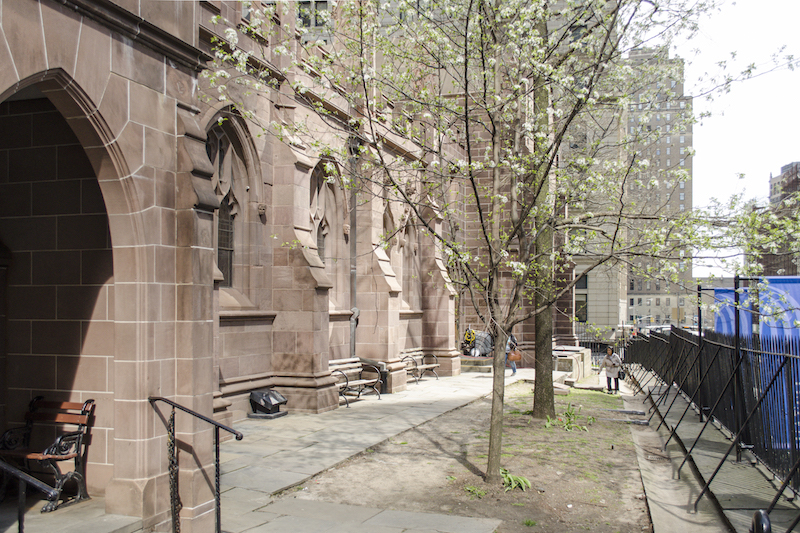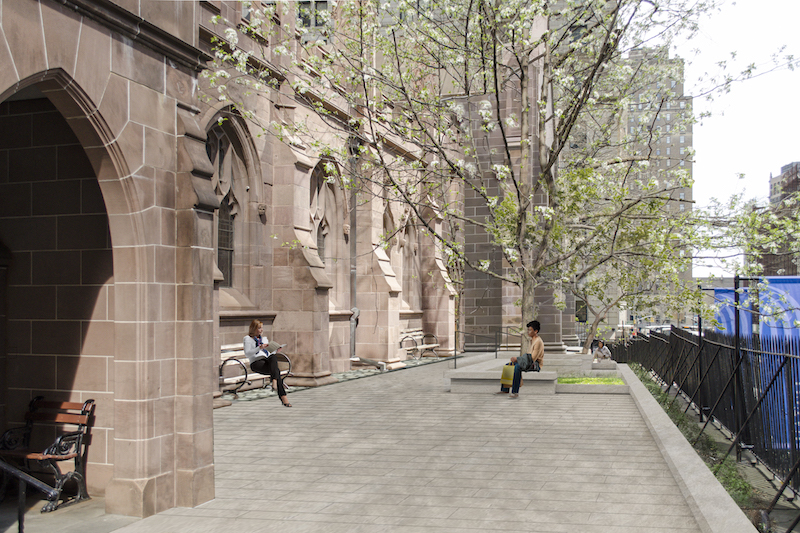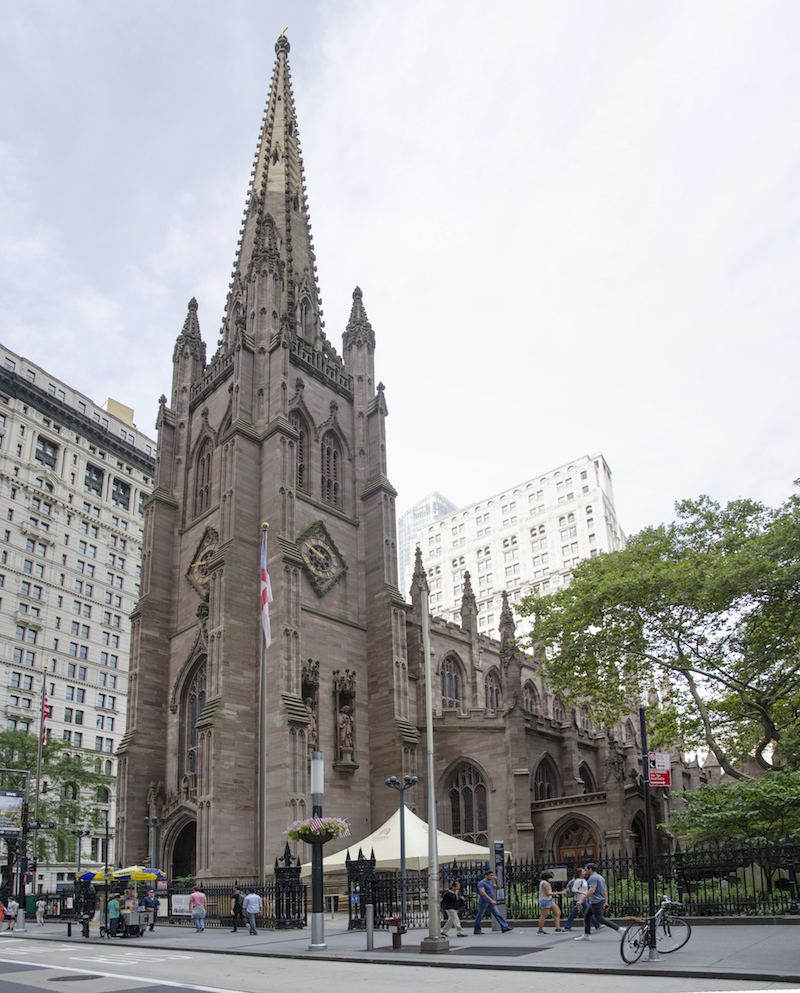Trinity Church Wall Street, which has served the Episcopal community in Lower Manhattan for 321 years, has initiated a $98.6 million “rejuvenation” that will close the building’s nave, the main body of the church, for approximately 20 months.
The architect on this project is Murphy, Burnham and Buttrick. Trinity Church had not identified the engineers or GC on this project at presstime. The rejuvenation will be financed entirely from the church’s endowment, one of the largest of any single religious institution in the country.
The 82,700-sf church is actually the third building from which Trinity Church has operated. The first, built in 1698, was destroyed by fire in 1776. The second, which opened in 1790, was torn down after being weakened by storms in the winter of 1838-39. The current church, whose construction was completed in 1846, at 281 feet stood as the tallest building in the U.S. until 1869.
The current building hasn’t had a significant renovation since 1946. “Underneath the skin, there are a lot of problems,” both structural and mechanical, says Rev. Phillip Jackson, Trinity’s Vicar. He adds that Trinity “is a little dark [inside]; we want to give back its light.”
The rejuvenation will return parts of the church to the original 1846 plan devised by Richard Upjohn, a British-born American architect. Its chancel, near the altar, will be restored to its original size, increasing capacity by 140 seats. The building’s interior walls and ceiling will be painted to reflect Upjohn’s stone design.

The remodeling will include making the church's altar movable to accommodate different events. The church's stained-glass windows will be repaired or restored. Image: Courtesy of Trinity Church
Other renovations and changes will include:
•Repairing and restoring the church’s stained-glass windows, and redesigning the clerestory windows so they match the church’s interior.
•Adding ramps to the North and South entrances, and modifying the East plaza, which would include removing steps in the Chapel of All Saints chancel, to make the entire church ADA-accessible.
•Separating the altar from its reredos (the ornamental screens behind the altar) and making the altar movable to accommodate different events.
•Installing a new lighting and sound system inside the church, and upgrading its exterior lighting.
•Renovating the choir room with acoustical panels to upgrade the practice and performance space.
•Adding a glass and steel canopy outside the church’s South side to provide processionals with protection from inclement weather.
•Installing gender-neutral bathrooms.
•Redesigned and refurbishing pews for comfort.

The top image shows what the church's West entrance looks like today. The bottom image shows how steps will be removed, and a plaza created, to make that entrance ADA-accessible. Images: Courtesy of Trinity Church

Trinity Church has a rich religious and political history. President George Washington, Alexander Hamilton and John Jay were among the government officials who worshipped there. When terrorists attacked New York City on Sept. 11, 2001, local residents took shelter in the church. Trinity, which is located near Zuccotti Park, also lent some moral support to protesters during the Occupy Wall Street movement in 2011, although declined to allow protesters to use its grounds.
During its renovation, which should be completed by Spring of 2020, Trinity Church will conduct many of its services and other functions from nearby St. Paul’s Chapel, the oldest building in New York, which itself recently underwent a restoration.
Related Stories
| Aug 22, 2013
Energy-efficient glazing technology [AIA Course]
This course discuses the latest technological advances in glazing, which make possible ever more efficient enclosures with ever greater glazed area.
| Aug 14, 2013
Green Building Report [2013 Giants 300 Report]
Building Design+Construction's rankings of the nation's largest green design and construction firms.
| Jul 29, 2013
2013 Giants 300 Report
The editors of Building Design+Construction magazine present the findings of the annual Giants 300 Report, which ranks the leading firms in the AEC industry.
| Jul 19, 2013
Reconstruction Sector Construction Firms [2013 Giants 300 Report]
Structure Tone, DPR, Gilbane top Building Design+Construction's 2013 ranking of the largest reconstruction contractor and construction management firms in the U.S.
| Jul 19, 2013
Reconstruction Sector Engineering Firms [2013 Giants 300 Report]
URS, STV, Wiss Janney Elstner top Building Design+Construction's 2013 ranking of the largest reconstruction engineering and engineering/architecture firms in the U.S.
| Jul 19, 2013
Reconstruction Sector Architecture Firms [2013 Giants 300 Report]
Stantec, HOK, HDR top Building Design+Construction's 2013 ranking of the largest reconstruction architecture and architecture/engineering firms in the U.S.
| Jul 19, 2013
Renovation, adaptive reuse stay strong, providing fertile ground for growth [2013 Giants 300 Report]
Increasingly, owners recognize that existing buildings represent a considerable resource in embodied energy, which can often be leveraged for lower front-end costs and a faster turnaround than new construction.
| Jul 2, 2013
LEED v4 gets green light, will launch this fall
The U.S. Green Building Council membership has voted to adopt LEED v4, the next update to the world’s premier green building rating system.
| Jul 1, 2013
Report: Global construction market to reach $15 trillion by 2025
A new report released today forecasts the volume of construction output will grow by more than 70% to $15 trillion worldwide by 2025.
| Jun 28, 2013
Building owners cite BIM/VDC as 'most exciting trend' in facilities management, says Mortenson report
A recent survey of more than 60 building owners and facility management professionals by Mortenson Construction shows that BIM/VDC is top of mind among owner professionals.














